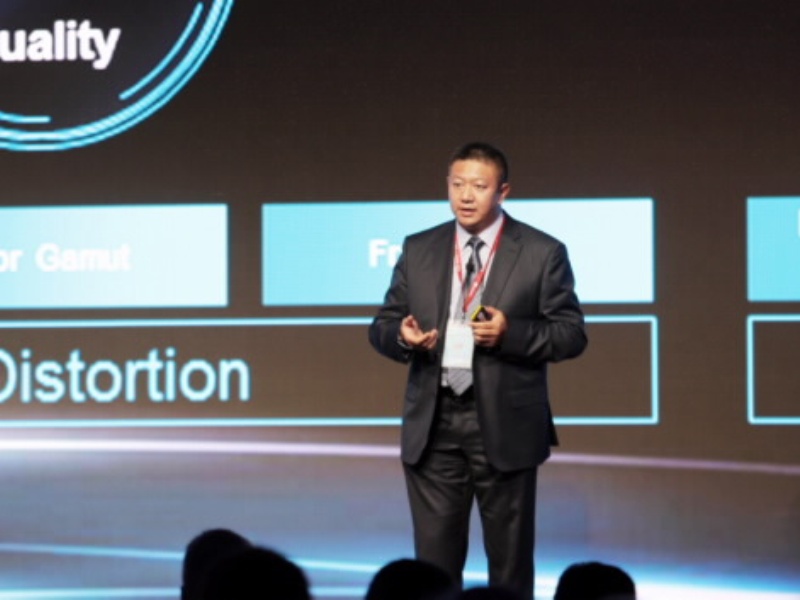Huawei Unveils Video Experience Measurement System U-vMOS
[Madrid, Spain, September 9, 2015] Huawei today unveiled its video experience evaluation system, U-vMOS, at the Ultra-Broadband Forum (UBBF). The system measures indicators from sample analysis of subjective video experiences coupled with analysis from related technologies to provide objective assessments on the overall video service experience. It provides a unified standard to measure the user experience which guides operators and the video industry chain in enhancing user satisfaction.

Wang Shengqing, President of Global Marketing and Solution Sales, Huawei, unveils U-vMOS.
ITU-T initiated research into the mean opinion score for video (vMOS) in 2009. The intent was to provide a good reference for O&M systems to monitor video service indicators. In today's world of ubiquitous video services, however, subscribers require access over a variety of terminals instead of just through their television sets - requiring the full-range of accessibility. Resolution and image quality constantly improve while screen and codec technologies continue to develop at impressive speeds. The benefits of the ultra-broadband era in which mobile and fixed networks work seamlessly together has made the multiple-screen, multiple-network, and multiple-service experience in video possible. Huawei believes a more comprehensive evaluation system is needed. A system able to evaluate the quality of the video experience on different networks, screens, and even in different scenarios with a unified and user-centric standard is a must.
With these definitions clearly in place, Huawei video research teams combined ergonomics, sample research, and in-depth technical studies to identify the top three factors that affect the video experience: video quality, interactive experience, and video view experience. Huawei defines three core philosophies in U-vMOS, which can measure these three main factors.
Core philosophy 1: Huawei carried out in-depth research on the limits of the human eye and how much resolution it can actually take in. The grading standard from the subjective viewing experience of various users watching videos of different resolutions on screens of different sizes from a typical distance is also defined in the algorithm. U-vMOS supports a resolution ranging from 360P to 8K and video played on screens ranging from 4.5 inches to 100 inches, breaking through the confines of the original vMOS definition in which differences could only be compared across screens with the same resolution. Considering the features of the human eye and actual reactions from viewers over different screens with varying resolutions, a score is assigned with the optimal viewing experience of the human eye as the full score.
Core philosophy 2: With data from extensive lab tests and verifications, Huawei defined the objective indicators that evaluate user interoperability in varying use scenarios and the viewing experience, including the initial loading time, zapping time, and seek response time. This philosophy enables the U-vMOS to measure user experience indicators throughout the viewing process.
Core philosophy 3: Huawei takes sample analysis on the subjective preferences of various audiences in different video application scenarios, and sets up a mathematical model that uses those preferences and parameters as weights. Huawei then adds a subjective preference parameter to the formula so that the U-vMOS system can adapt to different scenarios and continue to expand its "knowledge base".
To summarise, all these calculations and intent research essentially mean the user-experience-centric U-vMOS system uses unified philosophies to evaluate the video service experience on different networks and in different application scenarios.
User experience is the primary productivity that drives industries, and measurable evaluation of the video experience is the driving force for video service development. The Huawei U-vMOS system helps the video industry to measure and evaluate the experience of various video services on different networks and screens, promoting the development of the video industry.
Huawei has been committed to the development of video service for over 20 years and will continue to build networks that provide the optimal video experience and realize 4K@FBB and 2K@MBB. During the Ultra-Broadband Forum, Huawei and industry partners will share their views on ultra-HD video, virtual reality, and other new business concepts and innovative technologies, aiming to build a better connected world with Gigaband.